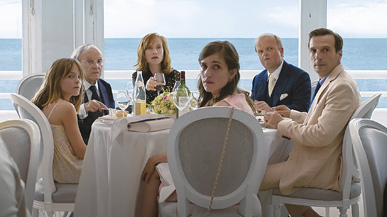|
|
They Shoot Oscar Prognosticators, Don't They?Early Look at Foreign Language Film RaceBy J. Don BirnamNovember 1, 2017
One thing you can immediately surmise if you watch the Oscars long enough is that there is a strong and persistent European bias in this category. It’s not just that Italy, France, and Germany have essentially combined to win more Oscars here than all other countries together, it’s that the nominations themselves reflect the “bias” of Academy members. I don’t mean bias in a negative way, but simply to remind us that they reflect the reality of their own experiences. Older white males are probably going to identify more something within the stories told by other such directors. Thus, most years three of the five nominees at least go to European countries, and I do not see a change in this trend coming soon. In any case, here is a small recap of the movies I have seen (in alphabetical order by country) with a 1-10 rating of its chances of an appearance in the final five at this point. My one big hole right now is Israel’s Foxtrot, which I hear is a shoo-in. Right now I can neither confirm nor deny. Austria: Haneke and Huppert Are Back With “Happy End” Michael Haneke won his country an Oscar for the devastating Amour, and he is back with a slightly less dark and a bit more comedic light sequel called Happy End, which features last year’s dark horse Best Actress nominee Isabelle Huppert. In the movie, a well-to-do French family has to deal with an aging, suicidal patriarch, a ball-busting business leader mother (Huppert) and the business's problems, as well as the family’s younger members and their various shenanigans. These are all pretty snobby, dislikable, but funny people, elitists who are out of touch but think themselves with liberal. The movie does not have “gravitas” or “weight” (although it is an amusing and critical analysis of today’s well-to-do upper class folk. Still, given the combination of star power, the lighthearted nature of the serious subject, and the fact that no doubt many Academy members will identify with some of the characters (though perhaps will resent the unkind portrayal) it would be silly to dismiss the chances of this movie altogether. Nomination Chances: 6
|

|
|
|

|
Friday, November 1, 2024
© 2024 Box Office Prophets, a division of One Of Us, Inc.


